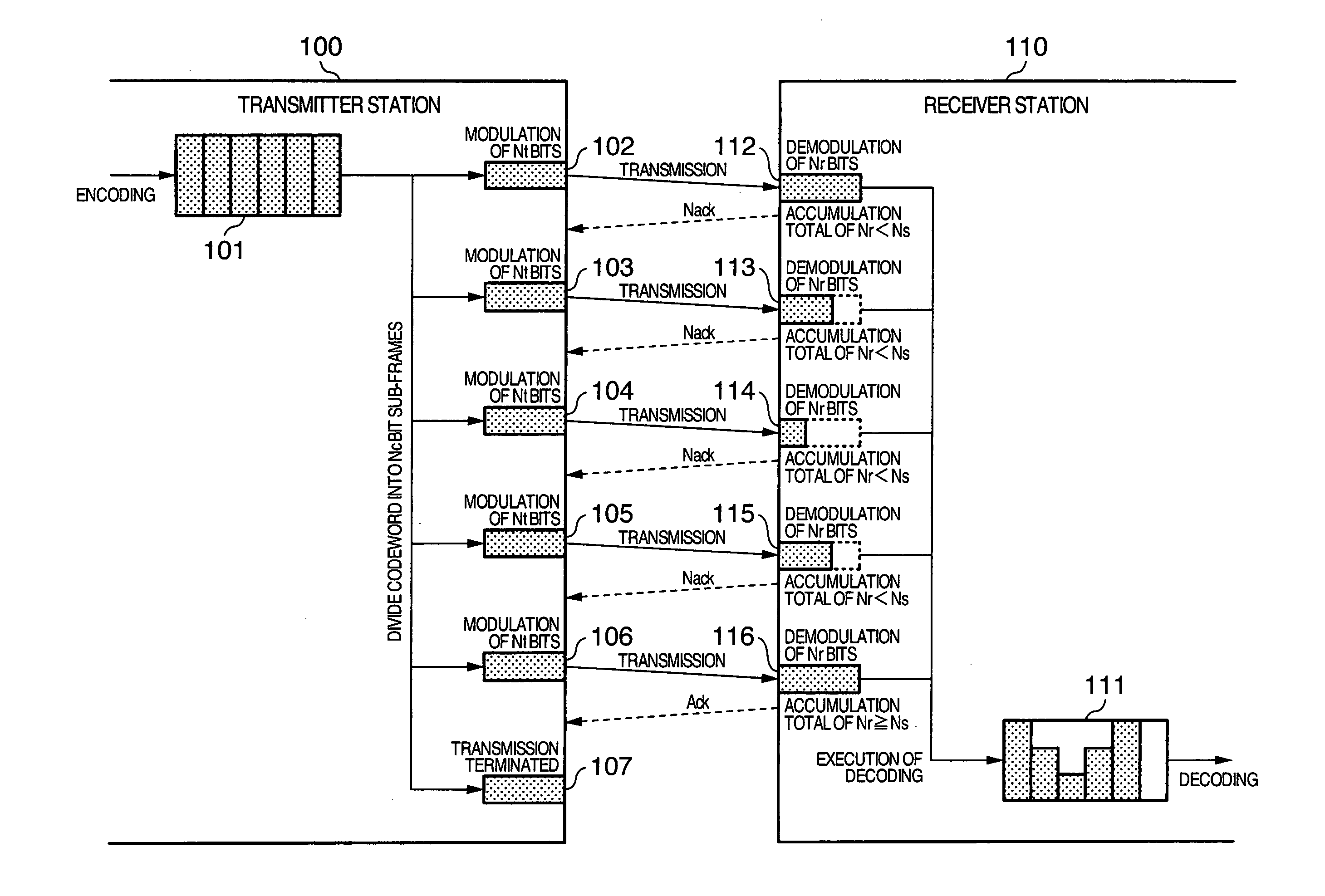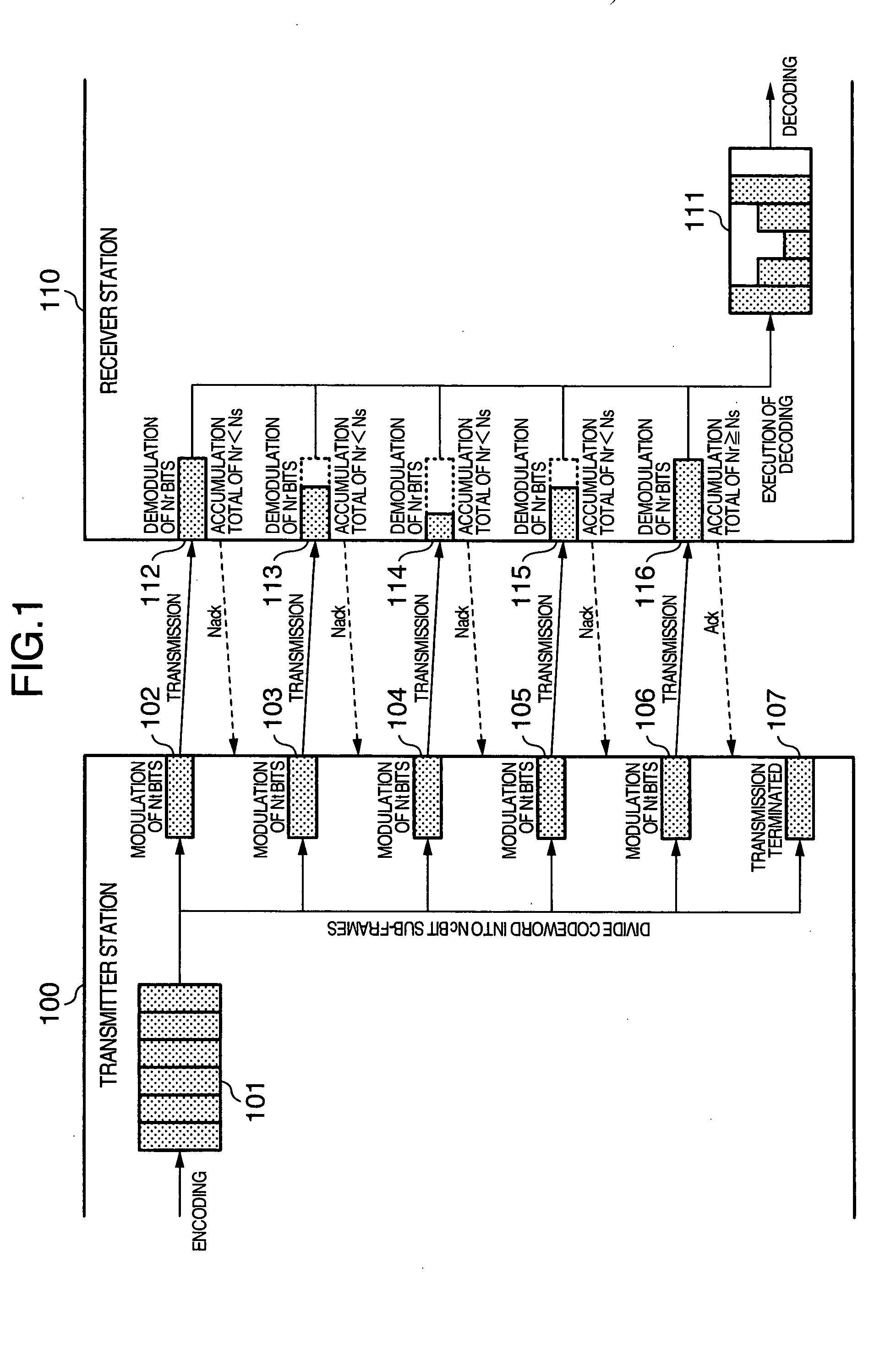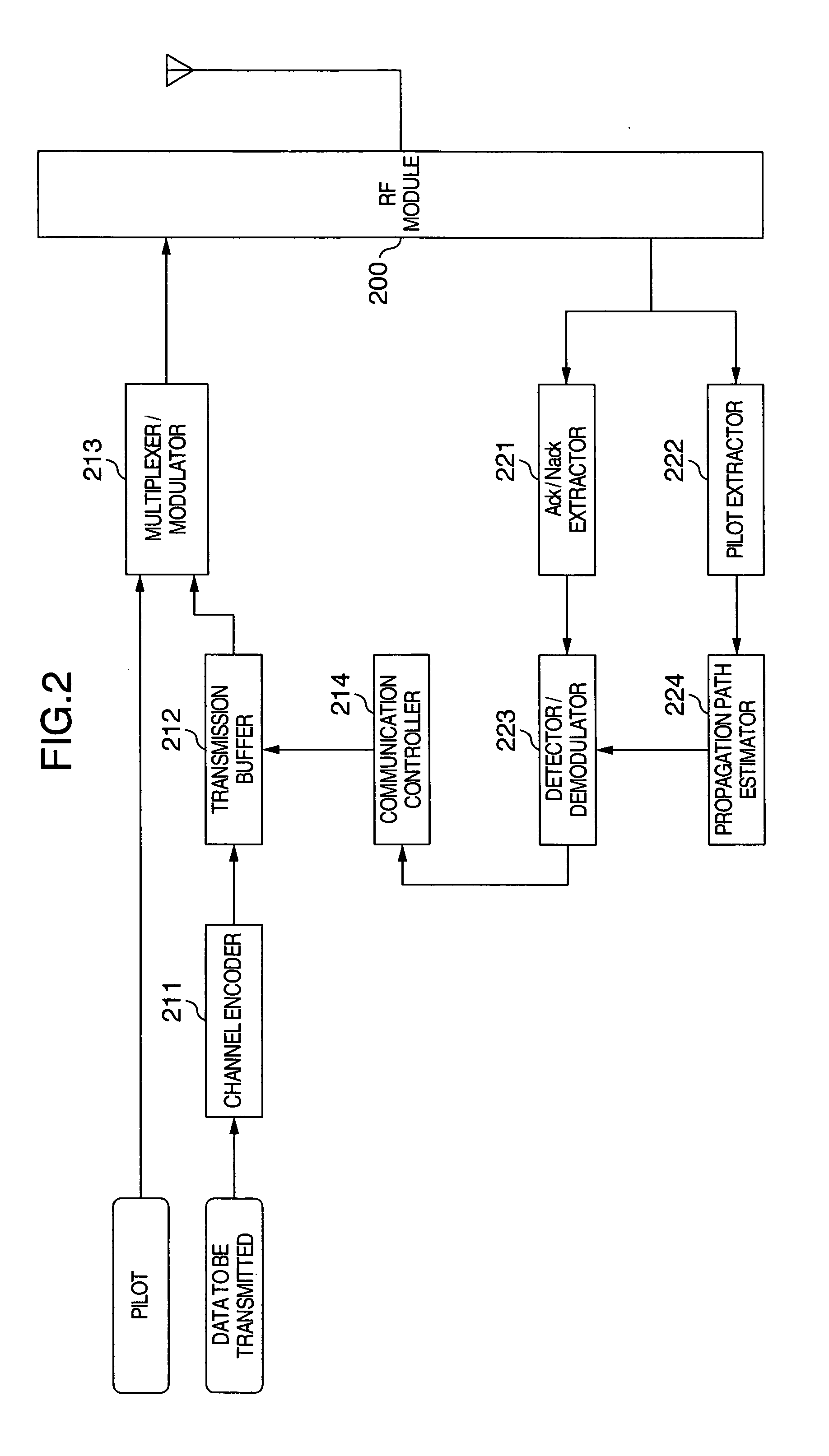Adaptive modulation method and coding rate control method
a modulation method and coding rate technology, applied in the field of radio communication systems, can solve the problems of increasing signal delay, deteriorating throughput, and longer transmission interval at the transmitter station
- Summary
- Abstract
- Description
- Claims
- Application Information
AI Technical Summary
Benefits of technology
Problems solved by technology
Method used
Image
Examples
first embodiment
[0042] The configuration of the transmitter station and the flow of signal processing in the present invention will be described with reference to FIG. 2.
[0043] In the transmitter station illustrated in FIG. 2, data to be transmitted is first encoded in a channel encoder 211, and accumulated in a transmission buffer 212. The signal accumulated in the transmission buffer 212 is divided into sub-frames which are inputted to a multipliexer / modulator 213 when a continued transmission is instructed from a transmission controller 214 or when no instruction is issued from the transmission controller 214, such as in the first transmission, and multiplexed with a pilot signal. The resulting signal is modulated in accordance with a predefined modulation type, and transmitted from an RF module 200.
[0044] In the transmitter station illustrated in FIG. 2, a pilot signal is extracted by a pilot extractor 222 from among signals received at the RF module 200, and an amplitude and phase fluctuation...
second embodiment
[0052] The configuration of the transmitter station and the flow of signal processing in the present invention will be described with reference to FIG. 5.
[0053] In the transmitter station illustrated in FIG. 5, data to be transmitted is first encoded in a channel encoder 211, and accumulated in a transmission buffer 212. The signal accumulated in the transmission buffer 212 is divided into sub-frames which are inputted to a multipliexer / modulator 213 when a continued transmission is instructed from a transmission controller 214 or when no instruction is issued from the transmission controller 214, such as in the first transmission, and multiplexed with a pilot signal. The resulting signal is modulated in accordance with a predefined modulation type, and transmitted from an RF module 200.
[0054] In the transmitter station illustrated in FIG. 5, a pilot signal is extracted by a pilot extractor 222 from among signals received at the RF module 200, and an amplitude and phase fluctuation...
third embodiment
[0060]FIG. 7 in turn is a schematic diagram illustrating the flow of signal processing in the present invention.
[0061] In the third embodiment, the number Nt of bits for use in the modulation per sub-frame, and the number Nr of bits resulting from the demodulation per sub-frame are both variable. The transmitter station determines the number Nt of bits for use in the modulation per sub-frame, and whether to terminate the transmission of a codeword or not. The receiver station in turn determines the number Nr of bits resulting from the demodulation per sub-frame, and whether to decode a received signal. The third embodiment of the present invention performs the processing similar to that in the second embodiment of the present invention except that the transmitter station controls a modulation type in accordance with the information of Nr notified from the receiver station. In the third embodiment of the present invention, the transmitter station utilizes the notified Nr, modulates a...
PUM
 Login to View More
Login to View More Abstract
Description
Claims
Application Information
 Login to View More
Login to View More - R&D
- Intellectual Property
- Life Sciences
- Materials
- Tech Scout
- Unparalleled Data Quality
- Higher Quality Content
- 60% Fewer Hallucinations
Browse by: Latest US Patents, China's latest patents, Technical Efficacy Thesaurus, Application Domain, Technology Topic, Popular Technical Reports.
© 2025 PatSnap. All rights reserved.Legal|Privacy policy|Modern Slavery Act Transparency Statement|Sitemap|About US| Contact US: help@patsnap.com



